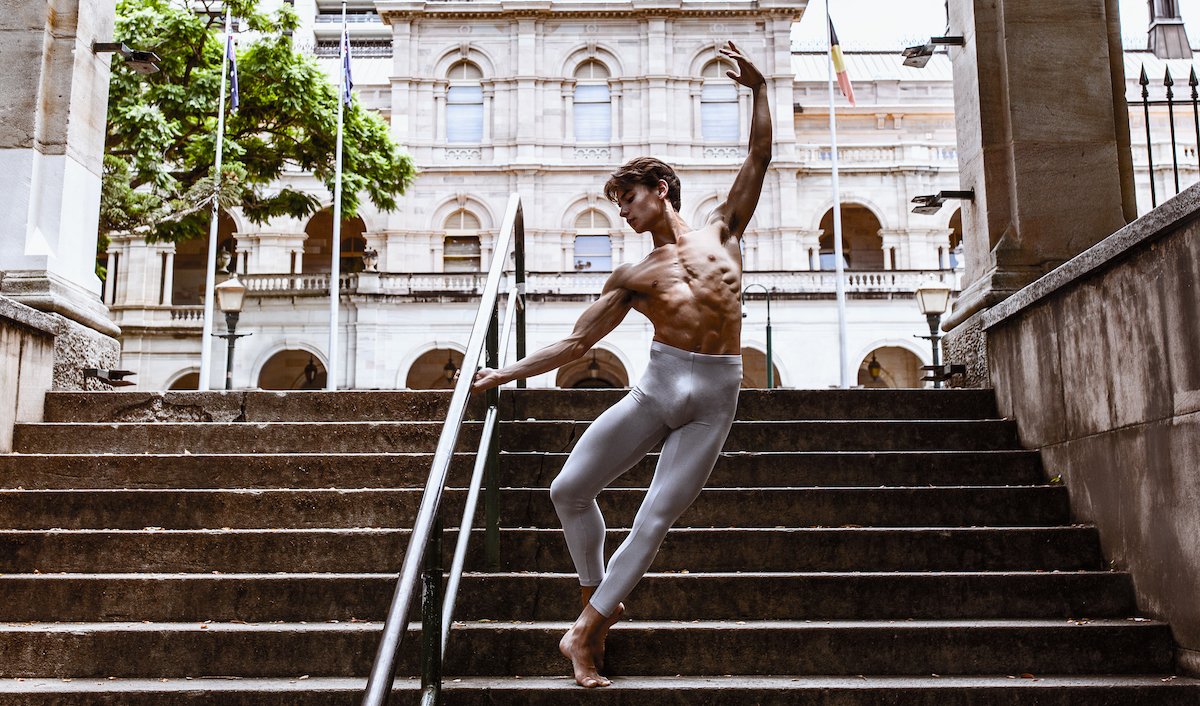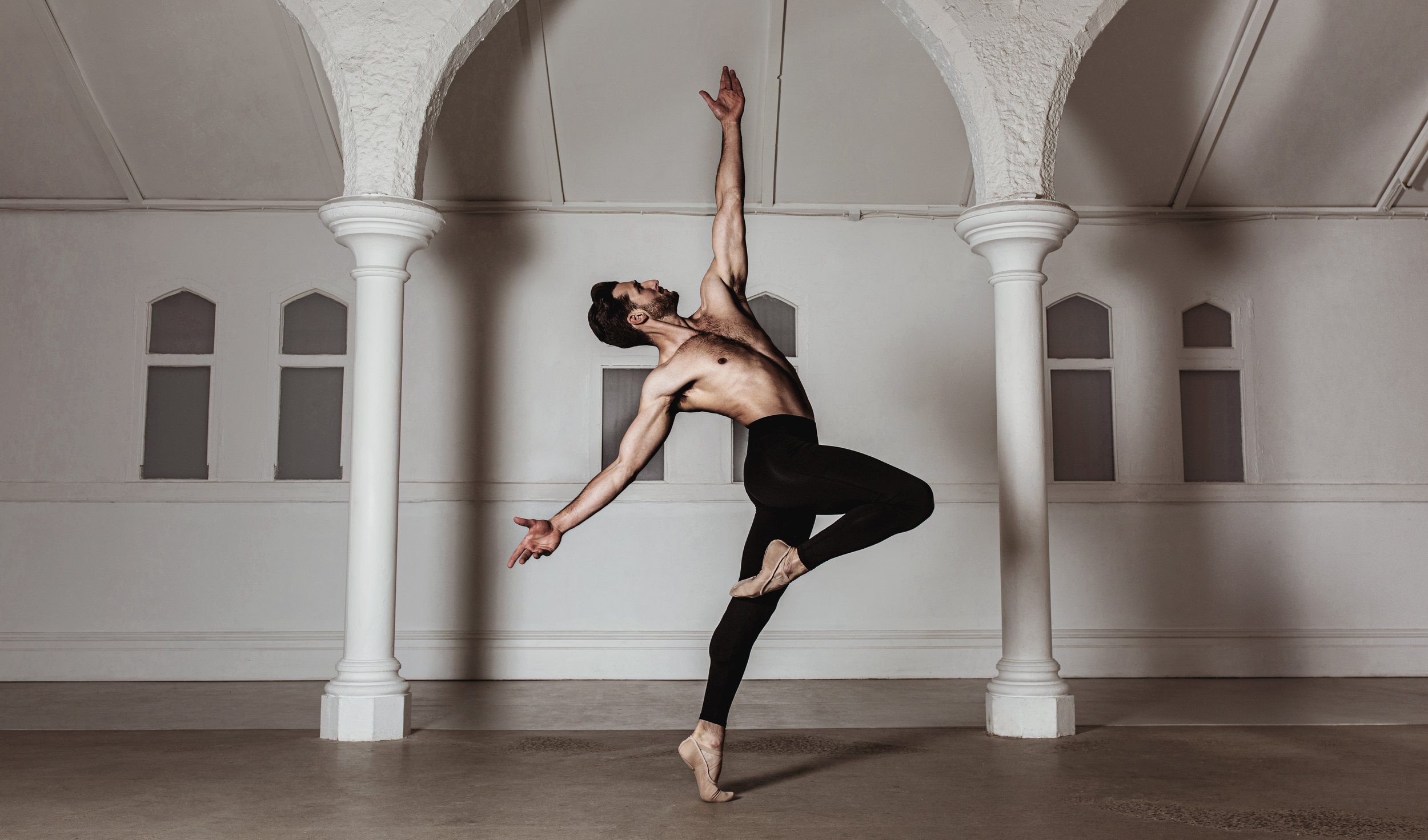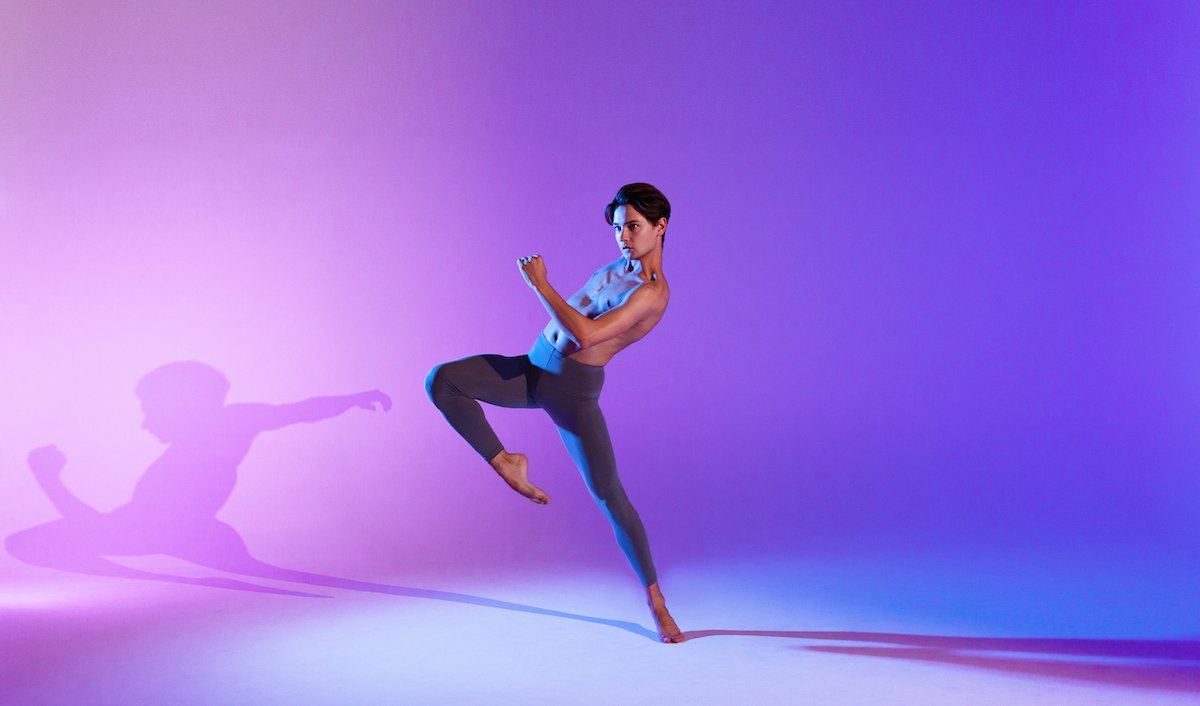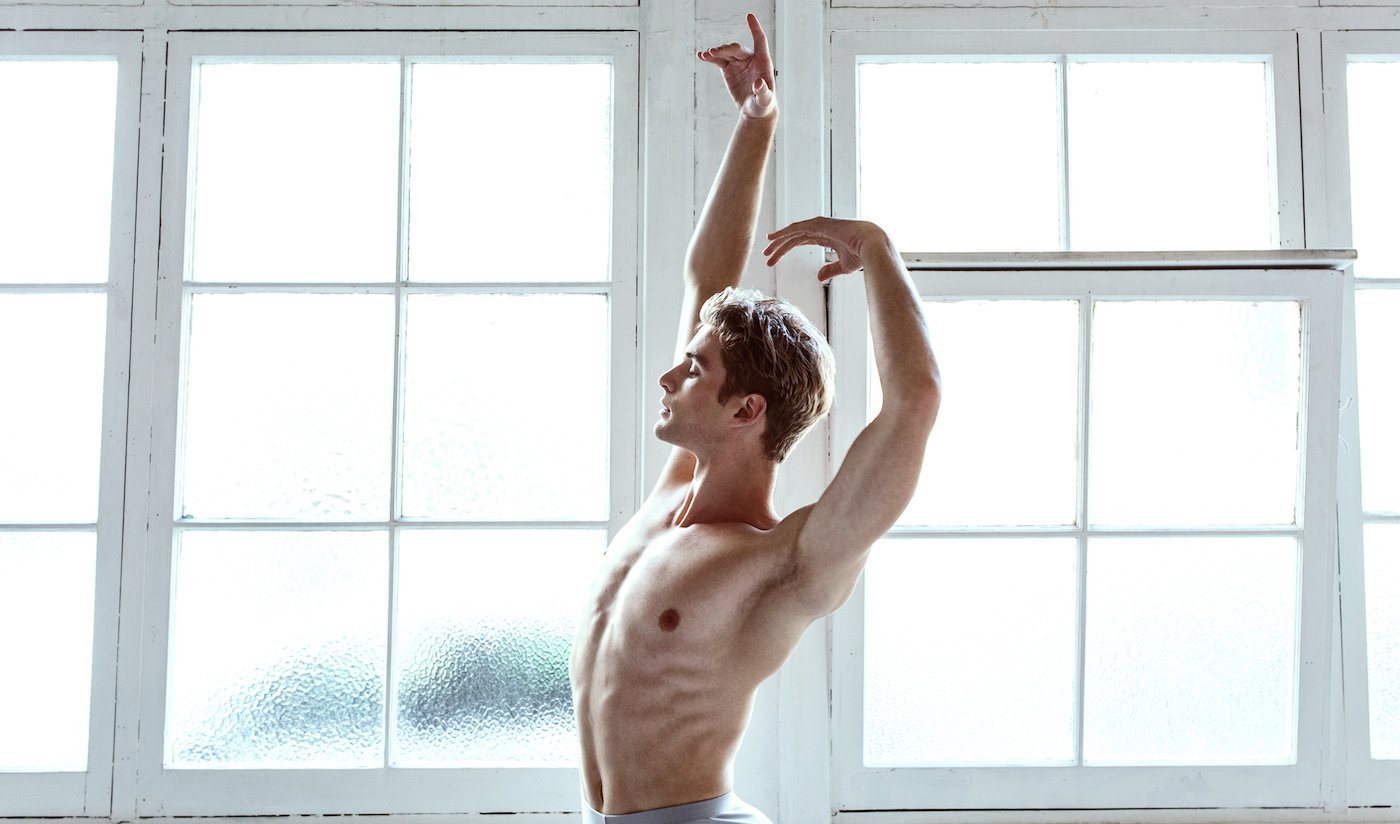Men in Dance: Advice for Male Dancers from Male Dancers
When you think of a professional dancer, what is the first image to enter your mind?
For many, this question will conjure a picture of a female ballerina donning a tutu and satin pointe shoes. Dance, particularly classical ballet, has long been associated with female artists performing traditional representations of femininity. George Balanchine famously said, “ballet is a woman”, a sentiment which continues to permeate societal perceptions of dancers to this day. The dance industry in 2022, however, does not reflect this image; in reality, dance companies require artists of all genders, and strong male dancers are in high demand, both within Australia and internationally.
Men face vastly different challenges and rewards to females in the industry, from mastering distinctly challenging steps, to managing the lingering negative stigmas surrounding male dancers. Unfortunately, many boys enrolled in dance classes are not exposed to male teachers or peers, and struggle to find appropriate mentors to guide them through the opportunities and obstacles of their training and early career. Without access to these crucial support networks, many young men find themselves lost in female-dominated classrooms; being the only boy in a class full of girls can be a daunting experience! To shine a light on the unique life of a male dancer, and provide some fantastic advice for boys at the beginning of their dance journeys, we reached out to a few of Australia’s most talented men in dance…
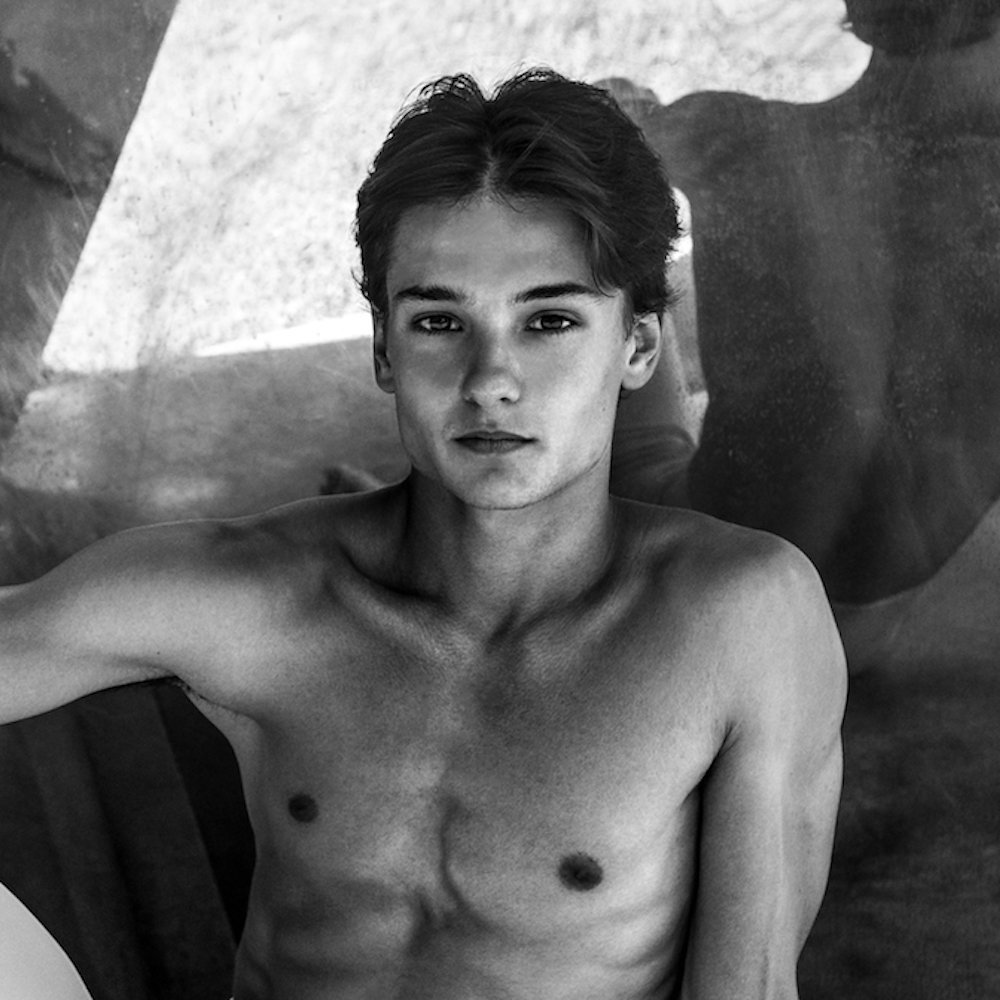
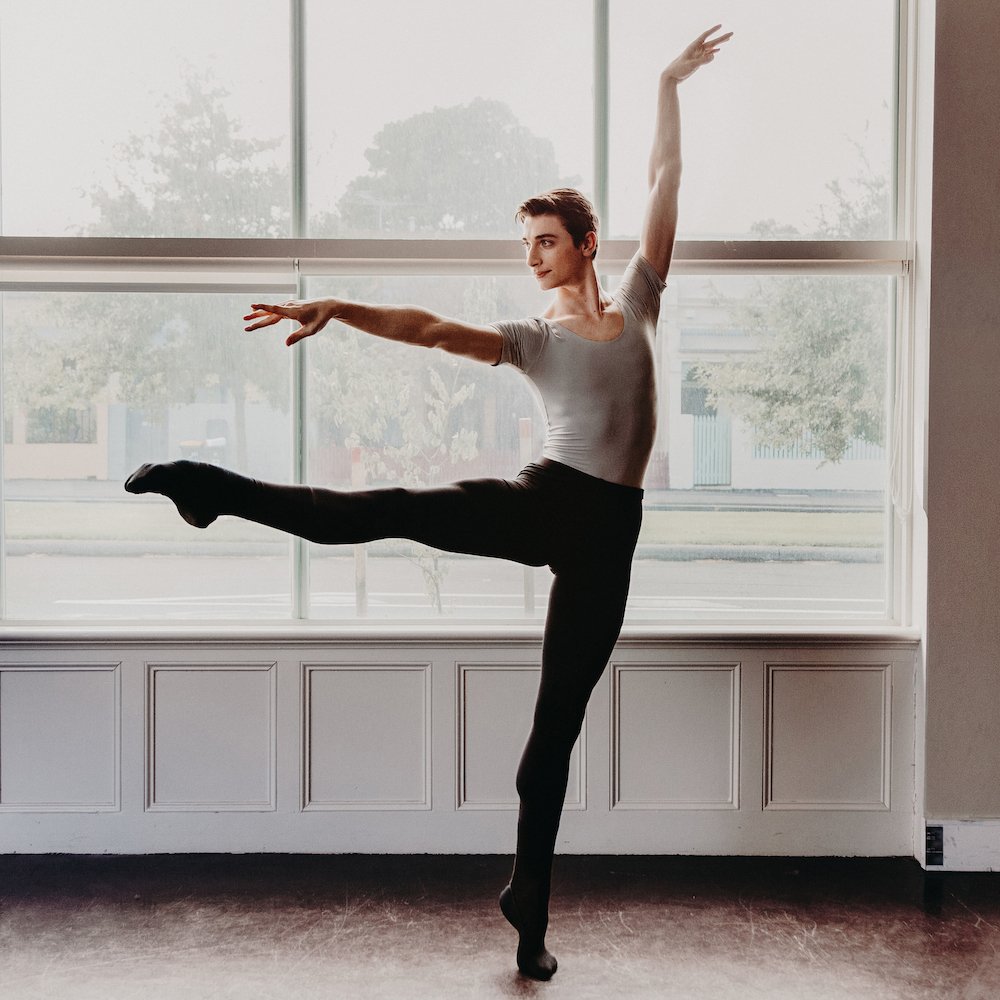
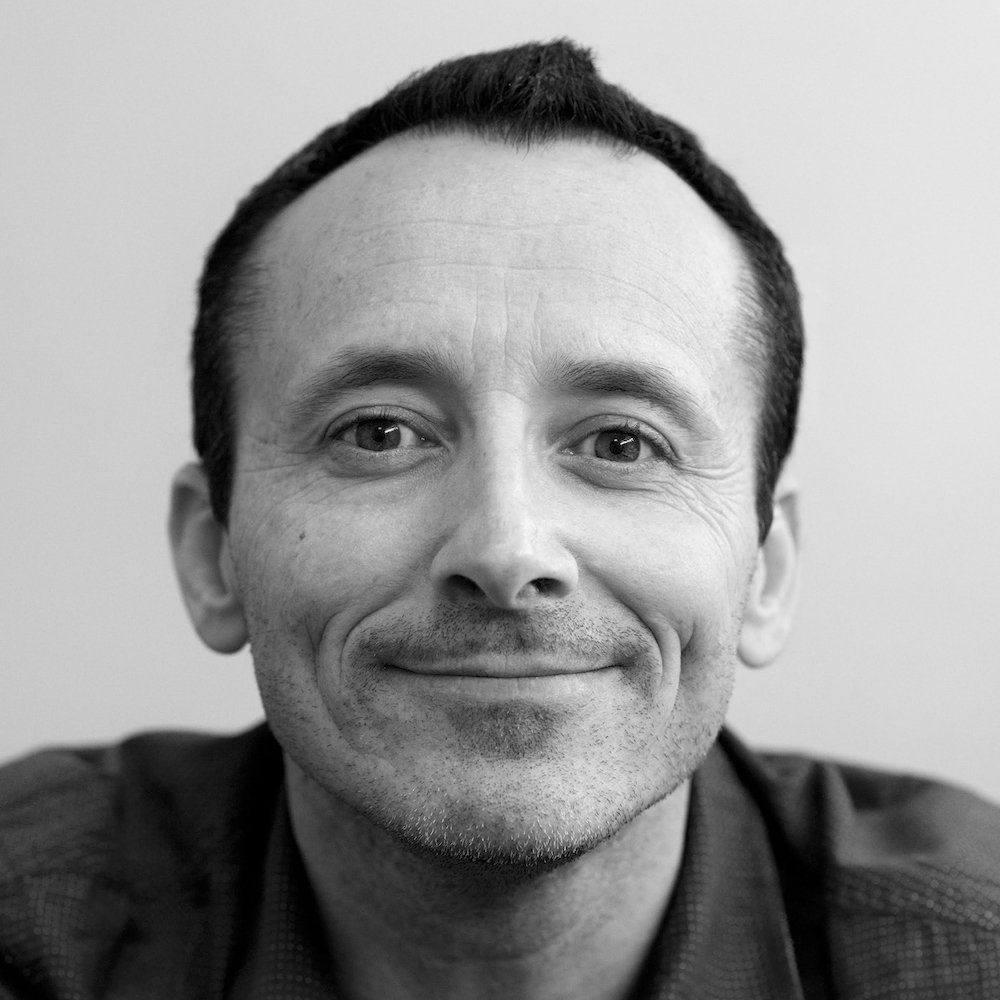
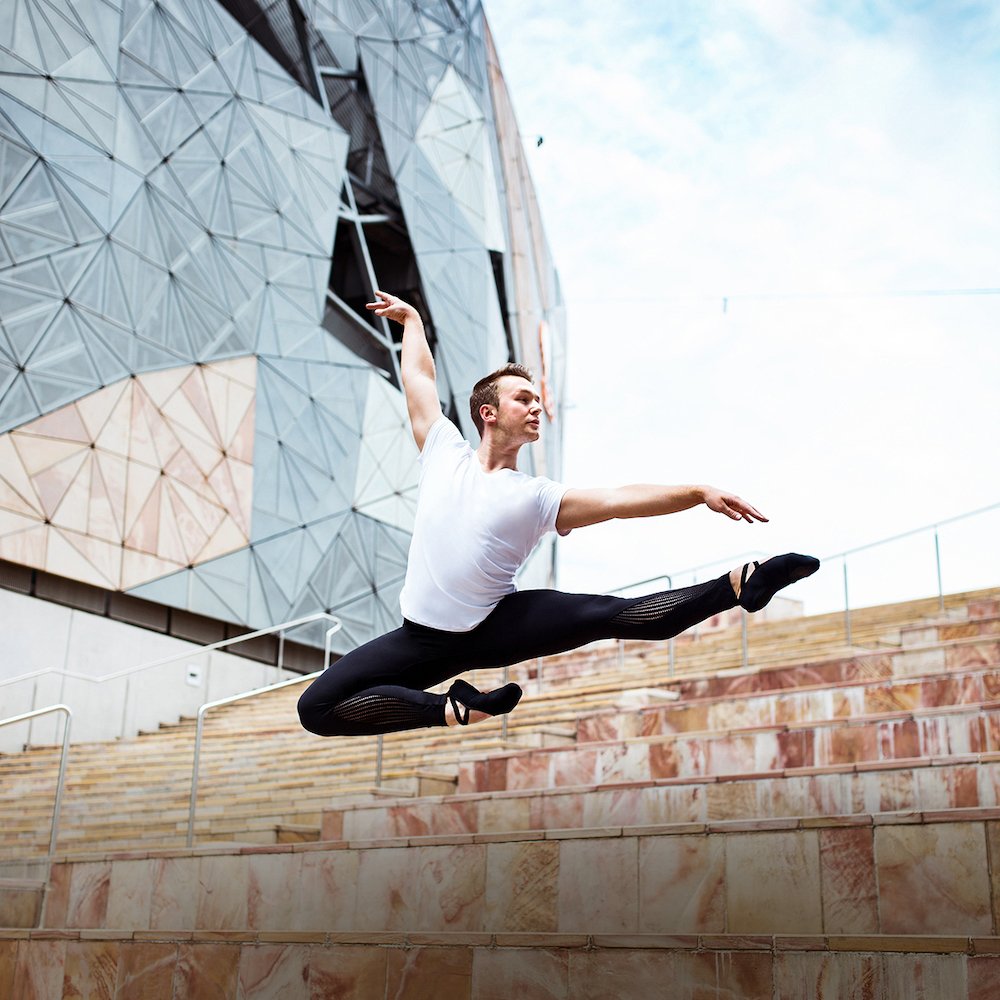
Dancer Archie wears the Calvin Tank, Liam Shorts and Révélation Ballet Shoe - Tech Fit
Energetiks: Did you always want to be a dancer? Why dance?
Joel Burke: I always loved dancing, but it wasn’t until later in my life that I decided dancing was something I wanted to do professionally. I was a very hyperactive child, so I think dance was a good way for me to exert myself. I always liked challenging myself, and found that ballet was one of the hardest things I could do – not only physically, but also emotionally and mentally.
Brayden Gallucci: I was initially drawn to ballet at the age of 3, when I saw my big sister start training. Of course, I wanted to follow in her footsteps! However, since dancing had always been a social hobby for me, it wasn’t until I was around 14 or 15 years old that I realised I could potentially make a career out of dance.
Jake Burden: Dance was not something I knew about as a young child, but my cousin was taking dance classes. One day, she asked me if I wanted to join in, so I gave it a go. I fell in love instantly.
Tim Podesta: I found dance late, particularly in comparison to the age and intensity that students start these days. I was 16 - my plan was to be an actor, and it was at the advice of my drama teacher that I start dancing to improve my movement and physical presence. At this stage I was a huge Michael Jackson fan, so I loved the idea! My younger sister was already doing ballet, so I went with her and apparently had a natural talent! Dance allowed me to continue to act and be emotive, and I loved being physical, and striving to achieve something. Dance pushes the mind and body like nothing I had ever experienced.
E: Who were your dance inspiration/s growing up, and how did they affect your life as a young dancer?
Burke: Our generation is very lucky in that we can watch endless amounts of videos. Growing up, I didn't have one inspiration, but I watched every male ballet dancer who was where I wanted to be. I took things that I liked about them, and tried to implement that into my technique. I still do this, to this day.
Burden: Michael Flatley was a big inspiration. There was something about his performances that were so electrifying. It was incredible to watch. I loved how he commanded the audience, and I knew I wanted to do the same for audiences one day.
Podesta: Michael Jackson and Mikhail Baryshnikov were my two main inspirations. They both had a quality which is timeless, but also cannot be imitated. For me, they both elevated what it meant to be a male dancer. Both of them still have an impact on my approach, to this day; I had a premiere of a new ballet I was choreographing in London a few years ago, and when I was researching creative ideas for this ballet, I was reminded that Michael Jackson had post-it notes stuck everywhere to remind him that he wanted Thriller to be the biggest selling album of all time. I kept the Thriller album as my screensaver to remind me to invest everything I had into this work. My ballet ended up winning many awards, and there have been many times that I sought [this] inspiration through my dance career.
Ned Zaina wears the Oakley Legging in the colour black
E: What do you most love about being a man in dance?
Burke: Less competition!
Gallucci: Since moving to London, I’ve always been surrounded by such talented boys. One thing I always loved was admiring the surrounding talent, and pushing myself to meet those standards.
Burden: There is something very special about being part of such an incredible, historical artform. It has made me the man I am today, and has allowed me to do something I love as a job.
Podesta: I love that you can have such an intense range of physicality and emotions. One moment, [you’re] flying through the air, limbs passing through splits to finish on one leg! The, to be fragile and kneeling in despair. Amazing!
E: What did you find most challenging about pursuing dance as a young male dancer?
Burke: There are so many challenging things about becoming a dancer…that’s what is so exciting about the career. It can be extremely tough on your body, as well as your mind. Not only are you performing at an elite, athletic level, but you are also having to make it look effortless. For me, as a male dancer, I think this is one of the toughest things. Once you become a professional dancer, auditions can be very hard on you mentally; picking yourself up, and sometimes even going on month long stints oversees, can be brutal.
Gallucci: Personally, I wasn’t surrounded by other young male dancers when I was growing up, which I think I found the most challenging aspect. It wasn’t so much their social absence, but not being able to learn from other young boys and better my own training.
Burden: I suffered constant bullying growing up, which made it very hard. However, I feel that it has given me the mental strength to push through difficult times. I have always really enjoyed what I do, and I knew it was my true dream and passion.
Podesta: My biggest challenge was my height. I am short, which was challenging, particularly in finding the perfect pas de deux partner. Some of the earliest advice I received, which motivated me every day, was from acclaimed Australian male dancer Gary Norman. He said, “You’re very short, you need to be very good”.
Joel Burke wears the Oakley Legging in the colour Slate
E: What is the biggest misconception about men in dance?
Burke: I don't believe that it's just a sport, or just an art, but there is something magical when you get to a certain level of training. I can only draw parallels to martial arts.
Gallucci: Men used to be there to support the ballerina, and were not expected to do much else. However, we have come a long way from just standing behind and going unnoticed. Now, we’re expected to execute incredibly difficult technical jumps and pirouettes, which may come as a surprise to outsiders who still view ballet as a female-dominated art form.
Burden: That we are weak, soft, or feminine. It’s extremely hard to do what male dancers do. Lifting, jumping, turning; it takes a lot of physical and mental strength.
Podesta: Unfortunately, I think that a stigma remains that what we do somehow requires less investment than that of a sports person or athlete. As an exercise scientist and someone who has trained at a high intensity in many physical pursuits, nothing has pushed me to the extent that dance has. It requires such incredible full body strength, balanced by a necessary sense of ease in stamina and agility that I think is unmatched.
E: Did you experience bullying/teasing as a result of the stigma surrounding males in dance? If so, how did you handle this stigma?
Burke: Not really. Nothing to tease about!
Gallucci: Luckily no - but I’ve heard many stories from close friends and others within the male dance community. Hearing their journeys definitely helped me to understand my privilege in growing up relatively sheltered from the stigma that most other young aspiring male dancers face.
Burden: Yes, from a young age I was bullied and harassed for being a male in dance. I definitely had it pretty bad, with both physical and mental bullying. I still constantly hear from young males in all genres of dance that they are experiencing bullying. If it was verbal, I tried to ignore it, which I know is easier said than done. However, if it became physical, I would often have to fight back or run away. I always spoke with my parents about it, as I felt it was important for them to know what was going on. I loved dance - it was my safe place, so I never thought about quitting. The bullying largely played a part in me leaving my normal Grammar School and attending a Performing Arts Boarding School at the age of 13.
Podesta: I grew up in regional Australia and did get bullied, even to the point of physical fighting once. But I loved what I did and had an incredible support network. They showed amazing belief in me, and I didn’t want to let them down. I think it helped that I felt very comfortable in myself, and probably also that I was older and more mature. My teacher at the time showed me videos of Baryshnikov and Nureyev, and these guys looked so athletic, showing strength in an emotional capacity. I wanted to be exactly like that, and nothing was going to stop me!
Dancer Dominic Ballard of Ballet West, photographed for Energetiks
E: Jake, what is Ballet Brothers, and why did you create it?
Burden: Ballet Brothers is an organisation which aims to support and inspire young male dancers. It was inspired by my own experiences, as well as a conversation I had with a male student when I first started teaching here in Australia. At the time, he was struggling with bullying and being rejected by family members for liking dance. When I was younger, I never had anyone who understood exactly what I was going through either; my first thought was that there must be so many boys out there feeling the same way as this boy. I wanted to create a brotherhood of boys who know they can always come to me, or each other, for guidance and support. Ballet Brothers’ mission is to create a support network and provide a platform for male dancers of all ages from around the world to share experiences and wisdom with each other.
E: Is there anything you would like to see improve about the dance industry, in regard to boys and men?
Burke: People are born singing, fighting and dancing. At the moment, if you look at the music and fighting industries, they are booming. I would like dance to be equal in size to these industries. We just need a Conor McGregor of the ballet world!
Gallucci: In general, of course there is so much that must change in order for any artist to truly live a life with no boundaries or restrictions, and create art that matters to them. It’s a matter of what we’re taught is right vs. what we’re feeling, or trying to express. I think that breaking down the binary constructs that confine male dancers into performing only masculine roles could be a positive and progressive way forward.
Burden: Define masculinity. I think that’s where we need to start - right there. There is not one way of being masculine. I feel we can all be sensitive but powerful, or angelic but strong. No matter what sporting arena or stage, everyone needs to feel like they can be themselves and be accepted. There is definitely still work to be done in breaking down the stigma around male dancers.
Podesta: It would be amazing if people could be more accepting of others in general, and think more broadly about what classifies as masculinity, or what is an acceptable career path. I always found wearing tights to be extremely masculine! An additional point that I still can’t get my head around is that dance, and the arts more broadly, are still treated as a hobby that you can’t possibly make it your real job!
Tawhia McMath wears the Avery Cropped Hoodie, Avery Classic Track Pant and PivotPerfect™ Dance Sock
E: Have you seen any change in attitudes toward male dancers as your career has progressed?
Gallucci: With the use of social media, the ability to inspire other young male ballet dancers is astronomical. Therefore, you are potentially reaching and inspiring dancers who may be experiencing negative attitudes towards their interest in ballet. It’s because of this accessibility in particular that the situation is hopefully changing for the better.
Burden: I personally feel things have shifted a little in recent years. I feel that, whether it is TV shows, documentaries, or access to the arts vis social media, male dancers and their stories are being seen and heard by a wider audience. I do often hear many negative stories from young ‘Ballet Brothers’, though, which makes me believe we still have a long way to go.
Podesta: I wish so much that I could say yes, but I feel in some ways we are actually regressing. I know this sounds pessimistic, but I think we require a huge cultural shift in Australia before we see greater acceptance of men in dance.
E: Do you have any tips for boys dancing in a female-dominated class environment?
Burke: Don't let them jump higher than you!
Gallucci: Don’t feel guilty about getting certain features roles or parts! I used to wish I could just be doing what all my friends were doing, but now I wish I had embraced the opportunities given to me.
Burden: Be brave, and don’t be afraid to be the only boy in the class. Know that it’s okay to be different; use it to your advantage. If you stick with it, there will be more male dancers around you one day. [Professional] companies are 50% male, 50% female.
Podesta: Boys tend to be competitive, and this competitive streak can be helpful in a class full of girls. I always wanted to be better than the girls. I used to watch as many videos as I could of awesome male dancers…. I would try to emulate their preparations into turns and jumps and as best I could. These days, the accessibility to footage is far greater than it was than when I was a student. I would also be looking to experience some summer schools where you will know there will be a good contingent of male teachers. Further, reach out to male dancers and teachers online - most will offer any advice they can to ensure we get more boys dancing!
E: Dance – especially classical ballet – often adheres to gender-specific movement and roles. Do you believe that gender norms within dance will continue to exist?
Gallucci: Within the classics, yes, I believe they will continue to exist. Just because as a society we progress, doesn’t mean we should abolish all gender roles within classical ballet. However, where we can explore and push boundaries are in new works [being] created now. This can give male ballet dancers the ability to be versatile and not just boxed into “masculine” roles… I think it’s important for contemporary or new works to push these boundaries in order for dancers to feel fulfilled artistically, not just technically.
Burden: I personally feel that there is a place for everyone. Traditional ballets have traditional gender roles as they are hundreds of years old; I do feel that is a part of the past which we need to recognise and respect. That being said, instead of looking back, I feel we should look forward to the future. [We should] create more ballets that have nonbinary/non-gender-specific roles, and allow dancers best suited to perform the part. I think this is happening more and more throughout the world with younger choreographers.
Podesta: It is such a difficult question to answer. I can’t say that we will see any great shift in ‘classical ballet’, however, I think new ballets will, and should, definitely be created on the social evolutions we are experiencing today. I think dance can be a leader in social discourse, and through aiming in this direction, it can return to the innovative artform that it was a century ago. I think as the science becomes more relevant and dance science is explored to the level of sport science, limitations will become less. There is still the idea that particular forms of training increase muscle size etc. This is just one instance of how we limit the progression of technique and perceived norms in what we can achieve physically, that will shift what we can achieve artistically.
Tim Podesta during rehearsals. Image courtesy of Tim Podesta
E: What would you say to boys currently facing challenges as a result of pursuing dance?
Burke: Everyone faces challenges. How you overcome them is what will make you different.
Gallucci: Without creating a culture of “running away”, I think joining a school that fosters an environment of inclusivity, such as a performing arts high school, could be beneficial. This is something I personally experienced which massively impacted my relatively sheltered upbringing as a boy in dance. It can make a big difference, as you’re surrounded by like-minded creatives.
Burden: Be bold, be brave and trust that if you love it, the challenges - big or small - will make you a better dancer. I had lots of bullying growing up, but it made me resilient, and also helped me to tap into my emotions as a professional. I believe it made achieving my dream that much sweeter!
Podesta: There has been a real decline in arts educations in primary and secondary schooling globally over the past decade. When you’re young you don’t know prejudice and haven’t formed ideas or perceptions of what is acceptable; you’re more inclined to follow your heart and do what you enjoy. If we can get boys to experience dance younger, we will see more pursue it with passion that may turn to vocation.
E: Do you have any tips for parents with sons enrolled in dance classes?
Gallucci: If your child happens to be in a female-dominated class, it could be worth trying to expose them to masterclasses or intensives that include other boys to experience being surrounded by other male dancers.
Burden: Ensure you find a teacher/school which nurtures your young man. Teachers love having boys - it’s just important that they know how to push and teach them. If you can find a school with a male teacher, or a male teacher for coaching, that’s a plus.
Podesta: My parents were awesome! They saw that I had found something that I loved. Although they knew little about it, which caused difficulties in understanding the right path for me in regards to training for the professional dance industry, they did everything they could to support my dream. I always tell parents to get involved, and don’t just wait for performances. Watch classes and ask for little demonstrations at home! Being a dancer is something to be proud of, and your interest will encourage healthy confidence and development.
E: How can we, as an industry and in the broader community, work to support male dancers?
Gallucci: The dance community is, of course, the least judgemental towards men in ballet. But I think we should continue to keep an open mind and not expect one certain thing from a male dancer. We should be allowed to be as multifaceted and versatile as possible!
Burden: Understand what a male dancer needs, and their differences and difficulties. Language for me is a big one, especially when they are young, potentially being bullied at school, and struggling with their choice. One example is addressing the class as, “girls”, is sometimes a little frustrating for the boy in the class. Being inclusive is important, but being sensitive to the language that is used could help.
Podesta: By embracing it as a skill no less demanding that that of a sports person or athlete. A boy who goes to dance classes every week will be putting in just as much effort and focus as a boy of the same age playing football, cricket or any other sport. Spread the word of what these young boys in dance are doing, congratulate their efforts, and bring it to the attention of as many [people] as we can!
(Photo of young male dancer with parent if possible? Alternatively, two young male dancers together)
E: How has being a dancer helped you grow as a person, beyond dance?
Burke: Dancing is a craft which requires thousands of hours. It gives my life a purpose; for that, I am extremely grateful.
Gallucci: I would say that dance has definitely opened my eyes artistically and creatively, giving me the ability to appreciate different forms of dance or art that I may have otherwise deemed strange or grotesque.
Burden: I have been fortunate to travel the world and learn other languages. I have lived in and worked in England, America, Germany, Singapore and Australia. I have also met lifelong friends, and my wife. My can-do attitude and determination also come from years in a competitive dance environment.
Podesta: Dance has literally given me a life of friendship, love, family, inspiration, and worldly experiences which I am so grateful for. It has taught me empathy and compassion, as well as self-reflection, enabling coping skills for the highs and lows we all experience.
Joel Burke wearing the Oakley Legging
E: Is there any more advice would you like to share with aspiring male dancers?
Burke: Get ready to work harder than anyone else on the planet. If you believe you can do something, don't let anyone tell you otherwise.
Gallucci: Peaking too young is a common mistake that can become detrimental to the timeline of a young ballet dancer’s career. So, I think it’s important to tell young male dancers that the process is more important, and it’s ok to have something to work on. I still do! I think something to keep in mind is that who you are outside of the studio doesn’t have to be anything like who you’re portraying on the stage. The separation of the two are very important - after all, you’re just acting! It’s ok if you don’t directly relate to the heteronormative male roles in classical ballet. Make it your own!
Burden: Go for it! Stick with it! Dance is one of the most challenging and rewarding things I have ever done. Dance has taught me to be brave, athletic, appreciate art, and has allowed me to live and work all around the world. You may experience tough times, but know that dance is something amazing and very special to be part of. Where it could lead you is very exciting.
Podesta: It’s tough, particularly in training, but once you get past the difficulties of building technique and finding your place in the industry, it’s the best life. Dance has given me so much, and continues to do so! Be true to yourself. Have goals, but have room to move, and be open to shifting them. It’s a short career; live every moment of it to the fullest!
Article by Taylor Venter
Photography by Elly Ford

